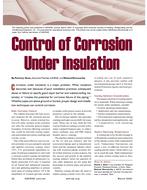Refrigerant maldistribution in the header of microchannel heat exchanger (MCHX) may reduce MCHX capacity by up to 30% because it creates the unwanted superheated region in the evaporator mode, where the heat transfer is much lower than the two-phase region. Although refrigerant maldistribution is mainly caused by phase separation of vapor and liquid in the header, it is also affected by the pressure drop in the header. The objective of this study is to develop the correlations for predicting two-phase pressure drop in the header based on experimental results, so they can be incorporated into MCHX model. Two-phase R134a is circulated into the transparent vertical header through multi-parallel microchannel tubes in the bottom pass and exits through multi-parallel microchannel tubes in the top pass representing the flow in heat pump mode of a reversible system. The local pressure drop between each two neighboring microchannel tubes is measured. Based on the experimental results, a model is proposed to predict the overall two-phase pressure drop in the header. Besides adopting the Zivi (1964) void fraction correlation and homogeneous model for two-phase acceleration and gravitation pressure drops as well as Lockhart-Martinelli (1949) correlation for two-phase friction pressure drop, the model relates the two-phase minor pressure drop due to tube protrusion with the single-phase vapor minor pressure drop with a two-phase multiplier, where the single-phase vapor minor pressure drop correlation was developed and validated in previous studies.
Product Details
- Published:
- 2015
- Number of Pages:
- 8
- Units of Measure:
- Dual
- File Size:
- 1 file , 2.3 MB
- Product Code(s):
- D-AT-15-C025
- Note:
- This product is unavailable in Russia, Belarus


